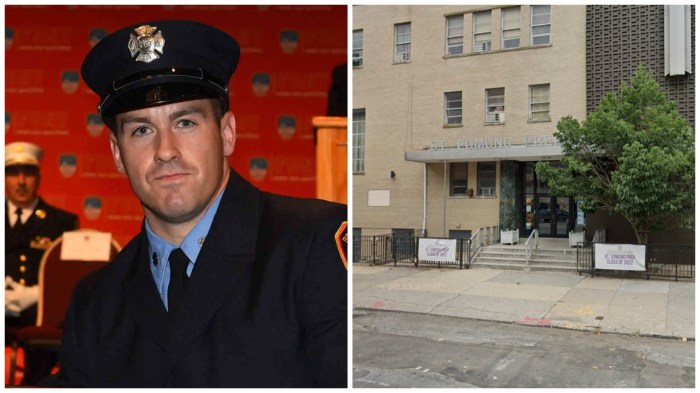
The Poppenhusen Institute will be celebrating the unveiling of a long-awaited elevator on June 2. Also, the 150th anniversary of the sturdy old Queens building, the site of the first free kindergarten in the United States.
Those two celebrations are more related than you’d think they’d be, according to Susan Brustmann, executive director of the institute. The kindergarten represents the civic spirit of the institute’s past. The elevator is potential for the future.
The institute is named for Conrad Poppenhusen, who came to New York from Germany before the Civil War and began manufacturing combs and other products out of whalebone. Eventually he got into the rubber business, and established a factory in the tiny village of College Point.
Out of what was largely farmland and meadows, a waterside industrial zone boomed. For those changes, “we could either bless him or curse him,” Brustmann said: but the changes then reaching the outer edges of what would later become NYC were there to stay.
What made Poppenhusen deserve blessings, however, was his philanthropic spirit. He gave the then-huge sum of $100,000, among other gifts, to create the institute, whose cornerstone was laid in May 1868. The stern and spacious six-story building, including a cellar and attic plus a French Second Empire mansard roof, played host to a community library and singing societies for the mostly German immigrants. The kindergarten opened in 1870, accepting students of any race and creed at Poppenhusen’s insistence.
Other kindergartens were popping up around the nation, but Poppenhusen’s was the first to be free and open to the community, as noted by congressional resolution in 2005. The kindergarten movement was based in part on the principles of German educator Friedrich Froebel who felt that children’s play was both important and instructive. The institute, for example, still has samples of paper patterns woven by the kindergarten pupils, who learned through activity.
The kindergarten was one of the social structures that Poppenhusen endowed for his workers. There were also training programs for adults and a day care for infants, according to Brustmann. The industrialist also established a death benefits program.
James Haas, a native of College Point who has written books about Poppenhusen and the neighborhood, says he never found evidence of labor strife among Poppenhusen’s staff. His institute formed the center of these early Queens residents’ lives for decades. It hosted a bank and even two jail cells, which you can visit at the institute.
“It was really the hub of just about everything that happened in College Point of a civic nature,” says Haas.
That changed in 1898, when the area became part of New York City, and the city took over various social and governing functions that had been done through the institute.
The local police force, for example, was disbanded (Haas’ great grandfather was one of those cops and had to fight to get his job back).
And when the city opened a local public school, the need for the Poppenhusen kindergarten lessened. The kindergarten closed in 1901.
But the institute didn’t shutter, shifting its programming to fill gaps in the city’s services. In the 1960s, when public schools were overcrowded, a city-funded kindergarten program found a home in the institute. Financial pressures left it much more empty for many years, but the institute fended off possible sale and demolition in 1980.
Today, the institute and its caretakers do their best to keep the building useful to a new generation of immigrants and native New Yorkers. The building still provides space to 12-step groups. There is a small museum devoted to the Matinecock tribe.
Brustmann hopes that an ongoing renovation and, most of all, the new elevator, will make the building accessible for seniors and wheelchair users, true to the institute’s egalitarian creed. With more accessibility, Brustmann says the space might also be used for Montessori programs or public school classes, or even rented out for parties.
New York has moved past relying on wealthy industrialists, no matter how good-hearted, for our civic health. The city is still a leader in early childhood education, thanks to Mayor Bill de Blasio’s universal pre-K and 3-k initiatives. But plenty of neighborhoods can use a healthy center and civic heart. Perhaps one day the original yellow-pine floors and soaring 19th century ballroom where College Point residents once gathered can be used in full for that purpose again.

















